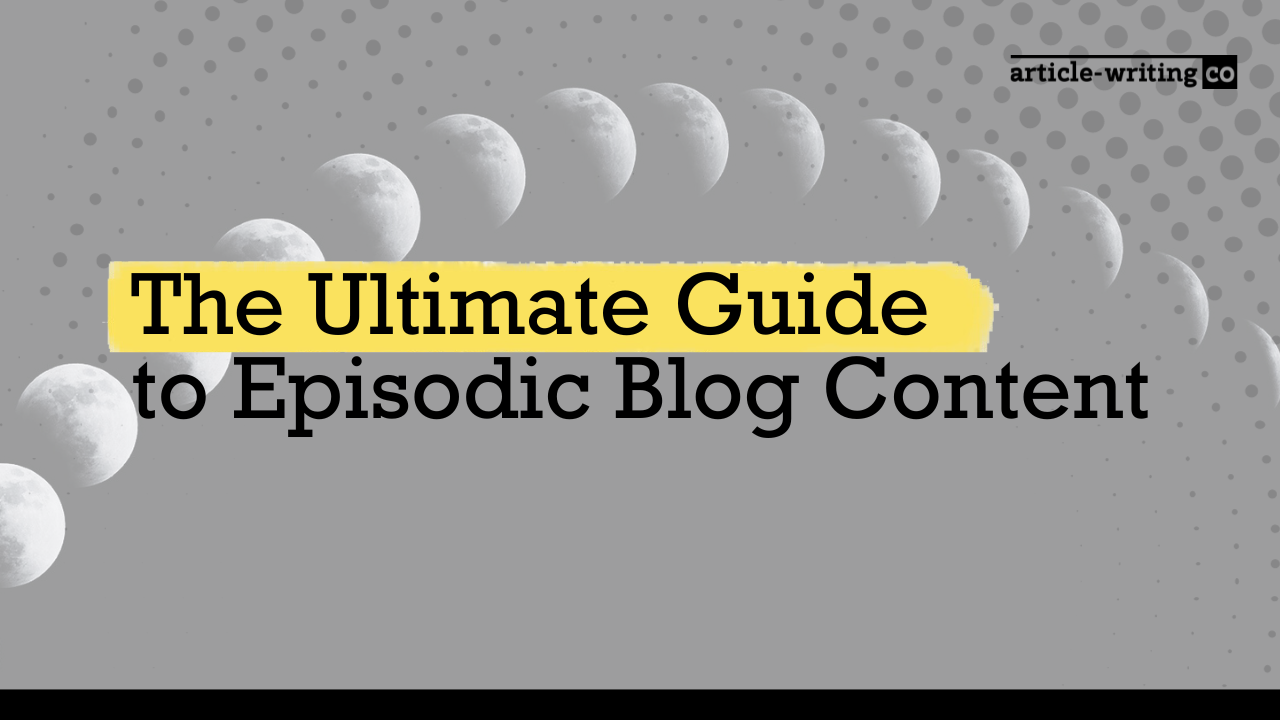An emerging trend that we’ve seen and are now responding to, are episodic and experimental blogs.
Think about it…
What makes you sit on the couch in front of your television for hours binging on a new Netflix show?
The episodic nature of the content!
You can’t wait to see what happens next and will come back time and time again to see a series to completion.
The same is true of episodic and experiment based content.
A company blog is just as paramount to your digital marketing success as social or email marketing. It is a way to build brand loyalty, inform and engage with your audience, and market your business.
How do you guarantee that your blog will be success though?
You look at other successful blogs and mimic their success!
Ardath Albee, CEO and B2B Marketing Strategist of Marketing Interactions, has a quote that perfectly sums up the execution of this type of content saying,
We of course are following suit and adding this to our line of blog content service for our clients.

Photo by Tracy Thomas on Unsplash
What is episodic and experiment based content?
As I mentioned before, you can think of an episodic blog as a TV show, it has a cast of main characters and a central theme, but along the way will introduce new characters and situations to shake things up.
An episodic blog will have a central plot point, with varying themes along the way.
Experiments can also be used in an episodic manner to track and update your audience on the progress or changes of your experiment.
This concept peaks our interest as a service option for our clients because it’s the best of all things content related–it’s long form, heavily research driven, and extremely engaging, bringing your audience back for every post.
One of the most successful episodic and experimental blogs that come to mind is Neil Patel’s $100K a Month Challenge, which he documented on his website Quick Sprout.
His premise was that he could create and build up a brand-new website to generate $100K per month within a year.
And spoiler alert: he did!
With each blog, he would give updates on traffic, revenue, content, SEO strategy, social media strategy, and goods sold.
Neil’s method for success is simple–it’s based around giving his audience value. He underlined this point stating,
Patel isn’t the only one taking advantage of this genius content marketing strategy.
Some companies have taken strategy to a visual format. Kate Spade, for example, produced a short video series called, “Miss Adventure.”
Where Neil’s content was more research driven and experimental, Kate Spade aimed to use their video series to market their apparel to their target audience.
The pilot for their series aired in November 2014 and created so much brand buzz, they continue to use this episodic today.
First hand research and thought leadership
Keynote speaker, author, and CEO of Marketing Insider Group, Michael Brenner knows what he’s talking about when it comes to branding. Part of self-branding is thought leadership, about which Brenner says,
Episodic and research based content allows the blog writer to craft a series of content that creates audience questions in one blog and turns around to answer them in another.
Doing this, will position you as a thought leader within your field.
Your audience will begin to see the first-hand research you’ve conducted to their benefit and will place you in an authority category in their brain’s index.
Going back to Neil Patel’s experiment, he executed thought leadership perfectly. He conducted an experiment that can be replicated by his readers.
He did all the first-hand research to build up his website so his audience would have those answers to build up theirs.
The advantages of long-form blogs
One of the staples of these episodic blogs is that they are long form, providing every piece of information that a reader will need to hold them off until the next post.
Long-form posts are generally advantageous for both the content producer and the reader.
Let’s start with a very important aspect for any blog–rank!
A study by serpIQ found that average content length of top 10 search results was over 2,000 words.
Basically, the longer the blog (with good content, of course), the better ranking you’ll get.
In our article on using your blog to build brand loyalty, we discussed how Google rewards fresh content based on QDF. Consistently coming out with long form, fresh content will dramatically increase your rank.
Your reader’s time on the site will also increase based on this long form content, meaning you have their attention longer and more of an opportunity to connect with or convert them.
A long form post also tends to boast more facts, statistics, and information, making your content a trusted resource to your audience, bringing us back up to thought leadership.
Build a following
With the climb of digital marketing, businesses can reach thousands if not millions of people more than previously reached.
What is the difference between touching a potential customer and gaining them as a follower of your brand?
Engaging content and community with your other readers.
For the same reason that many popular TV shows catch ablaze with audience members through interest and discussion of other viewers and commenters, so too can your episodic blog!
The recipe we use with our blog content service for building a following using an episodic or experimental blog is simple:
Engaging content + reader interaction + asking and answering questions = ROI

Hire Article-Writing.co as your episodic blog content service
Article-Writing.co is an experienced company with a staff of skilled writers that have experience with heavy research and gaining engagement–exactly what is needed to write an effective episodic or experimental blog.
Does your current blog rank well?
Are you seeing a growth in your following and brand loyalty?
Do you think your audience see you as a thought leader?
If the answer to any one of those three questions was ‘no’, let us take the lead on with our episodic blog content service and change that answer to a big fat ‘YES’!
Jonathan Bessette is the General Manager at Article Writing Co. He’s been a writer, editor, and outreach specialist, has worked with clients in dozens of different industries, and has created engaging content, consistent growth, and exciting outcomes.





